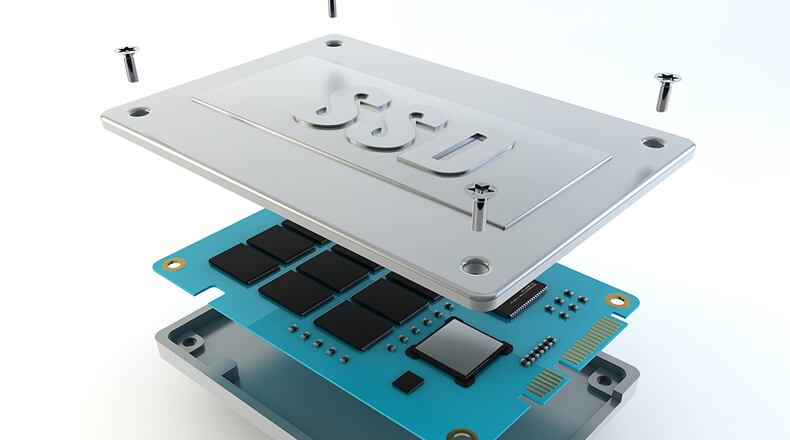It is true that SSDs cost more than traditional hard drives.
For example, checking prices on Amazon, a 500 GB SSD costs about $140, while a 512 GB traditional hard drive costs just $40.
Some people decide to install a smaller SSD to hold the operating system and a larger spinning drive to store documents.
Of course, not every computer can hold two hard drives. Desktop computers can usually be configured with two drives, but many laptops cannot.
Actually, I once modified an older MacBook Pro by taking out the DVD drive and fitting a special bracket to mount a second internal drive.
If you do choose to try a two-hard-drive setup, you’ll want to pay attention to how files get saved on your computer.
The SSD should be used for the operating system and your apps. You’ll save documents to the spinning hard drive.
When you load programs on your computer, there will be a point during the install when you can choose a destination for the app. If you’ll be using the app a lot, and if you have the space, install it on the SSD. If you’ll only access the app sporadically, you can direct it to the spinning hard drive.
Your music collection, your digital photos and all your videos should live on the spinning hard drive.
You should direct your downloads and documents to the spinning drive as well.
You can find some good tips on hard drive management here: (https://www.pcworld.com/article/2110095/the-ultimate-guide-to-proper-ssd-management.html).
I was also asked about managing free space on an SSD. A reader who is running his operating system on a solid-state drive noticed that the SSD was almost full and wanted to know whether there is a rule of thumb for how full a disk can get before bad things happen.
My rule is to start worrying when a disk reaches 90 percent of its capacity. If you run Windows or Mac OS on a 128 GB SSD and it gets to more than 90 percent full, it’s time to examine what’s stored on the SSD and either move some of it off or buy a larger SSD.
I think a lot of this advice might be moot soon, as SSD prices are dropping. Most of us who use laptops don’t have more than 500 gigabytes of onboard storage, so $140 is not hugely expensive.
And for what it’s worth, if you really want more fast storage, a one terabyte SSD costs about $280, while a two terabyte SSD costs $649 and four terabytes will run you $1,399. These drives do get expensive in a hurry.
———
ABOUT THE WRITER
Jim Rossman writes for The Dallas Morning News. He may be reached at jrossman@dallasnews.com.
About the Author
